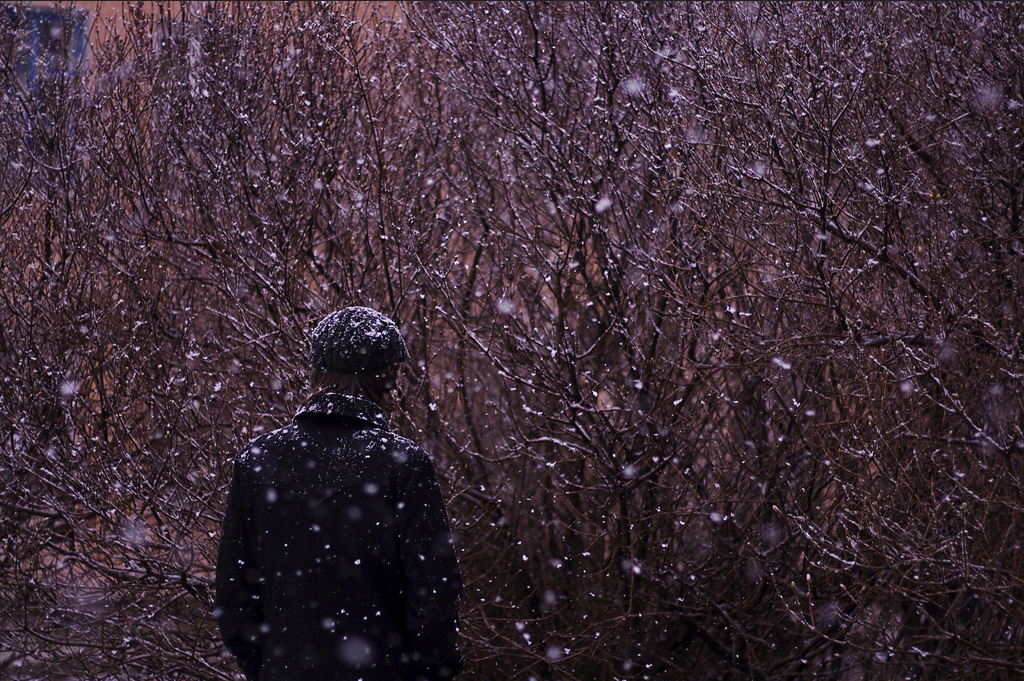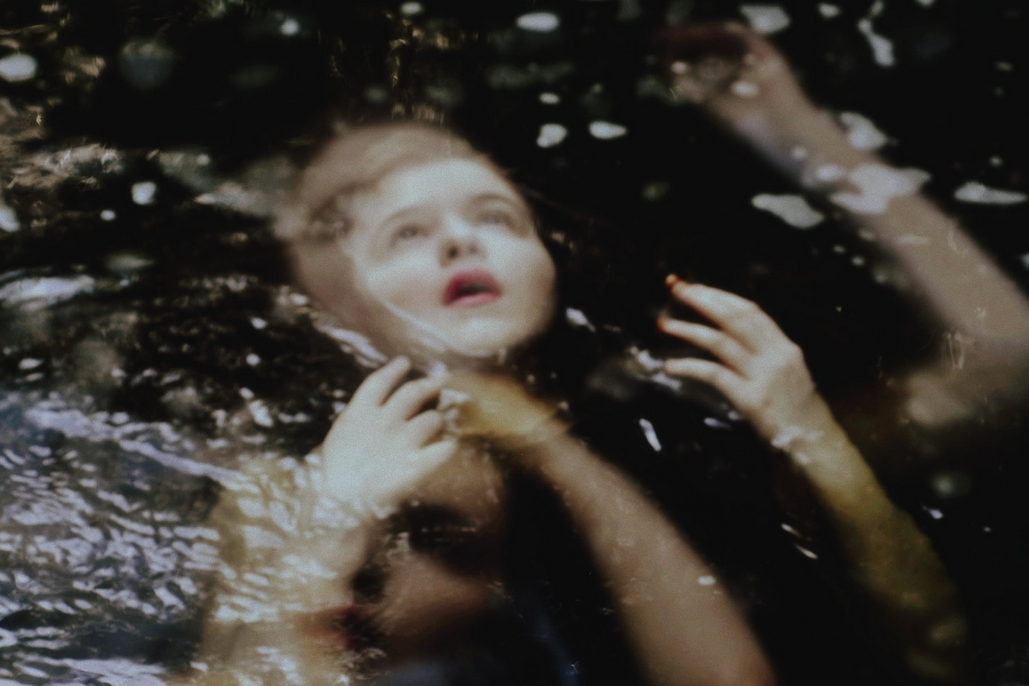The eightfold path, the eight steps to awakened living and happiness that the Buddha laid out, have three foundations: sila, samadhi and pana. Ethics, meditation, and wisdom. They relate to wise livelihood, behaviour and speech.
A lot of this practice is about finding the right distance from our own suffering and others who come to us with their suffering. We want to come very close to experience, we want to be intimate with it, but at the same time we need to have the space of mindful awareness. Trungpa Rinpoche had this expression called idiot compassion. I really love that expression, to me it feels like non-discerning compassion, that knee jerk having to take care of other people instead of being able to pause, just that sacred pause of mindfulness to really look at the situation and see what is being called for. He said to be open to the train you don’t have to stand in front of it. That’s a very helpful hint.
Restraint
There are three kinds of sila in the classical teachings. The sila of restraint is the one we usually think of when we think of ethics. We think of the ten commandments: thou shalt not do this, it will cause harm. The equivalent in Buddhist training are the five precepts or mindfulness trainings: not harming, not lying, not engaging in sexual misconduct… The sila of restraint is restraining ourselves from doing things we know are harmful to others or self destructive. This is where especially young people can get rebellious and impatient with the precepts, I know I always do, and the thing that helped me especially in my 20s as a young meditator was thinking oh, these are actually recipes for helping me keep my mind clear. So that when I sit down I’m not consumed with regret. I’m not obsessively reviewing the things I did that I shouldn’t have. It helped me to see them as recipes of protection for the clarity of our meditation.
Then there’s the sila of cultivation. I would frame the five mindfulness trainings or precepts in a more positive light, so instead of not killing we would say cherishing a life. That’s the gesture of respect. Bowing to all life no matter how frightened or enraged or unpleasant its manifestation might be. We aren’t trying to annihilate, disavow, split off or deny anything that appears in our consciousness. That’s the contemplative inner understanding. In the Buddhist tradition they have a way of talking in teachings, they say there’s both an outer and inner/secret meaning of things. If we look at the sila of restraint, it means we don’t go around lying and cheating and getting drunk and making messes. Then there’s the inner meaning: that we cherish the life of all worlds, we cherish all forms, we don’t try to kill our own thoughts, we work with them so that we can work with the thoughts of others more skillfully.
Compare
In this sila of cultivation, it’s not just about not stealing, it’s about appreciating what’s given. Cultivating and experiencing gratitude that we can do this practice. There’s another inner meaning of not stealing: not comparing ourselves to others. So much suffering is caused by the comparing mind. We compare our meditation practice, or we compare whenever we look at each other, the mind does it so fast. I once did a long meditation retreat with vipassana teacher Joseph Goldstein. I told him sheepishly that there’s all this comparing going on. I look at Ryan and she’s sitting for three hours straight and I feel like such a slouch of a practitioner. He said, “The comparing mind is the last one to go.” That made me feel great. Now I’m on the threshold of enlightenment instead of a low-self-esteem person hooked on comparison. It was a very beautiful reframe.
Comparing is a way of stealing from ourselves. There’s an expression in Zen: the mind is a thief. What do you think that means? It steals our time and awareness—yes, exactly. In that same retreat the idea was to have continuity of mindfulness day and night. I was in a meeting with my teacher, and he asked: tell me what you’re doing in the periods that aren’t formal practices of sitting or walking or eating? I reflected and said: “Oh I go back to my room often.” “What do you do there?” I quickly reviewed what I would be able to tell him. “I look at my stuff, i rearrange my stuff, I putter.” The look on his face when I said I “putter…” I was just talking about ten or fifteen minutes of the day but the look on his face was of such dismay. “You putter? In your room?” How hard did I work to get the time to be on this retreat. How expensive was it? Puttering is pleasurable, but it’s also an incredible waste of time. And there’s something compulsive about filling the emptiness of a practice period by rearranging your stuff.
You can understand this as a metaphor and relate it to your own world when you have a moment. What do you do with that moment? That’s one way we steal time from ourselves. Another way is that you’ll have an insight, something happens to you, and then the mind comes in and starts talking about it. Oh, that was such an important insight, I wonder if I’ll have another later on. This is a four day retreat so chances are I will… Or you have a moment of space and openness and clarity when everything is resting in its proper place, and you’re in that place of joy and peace and serenity. And then the mind comes and blabs away. These are ways we can steal time from ourselves. The cultivation of the second mindfulness training is gratitude and appreciation. When these stealing moments appear try not to annihilate them, but try not to run off with them either.
Sex
The third training, the sila of cultivation, is also about not engaging in sexual misconduct. I don’t think most of you are being sexual with your clients or students. But this sila invites us to be aware of how we are in this dimension of our being and appreciating this source of so much powerful energy. It’s a reminder that shouldn’t cross the line subtly with a little look, a litle flirty remark. How attuned and mindful and respectful can we be? Then we are free to appreciate the movements of attraction and aversion. Who in this room has never felt attracted to the wrong person? We’re human beings we’re not corpses. We don’t have to be afraid of those energies. If we really trust our foundation in sila, it’s a freedom to feel these impulses without acting on them, so that we can understand and respect them.
A friend of mine who is a psychoanalyst described working with someone who is in an intense erotic transfer to her. He just sits and looks at her and says, “I really love looking at your breasts in your t-shirt,” he gives voice his feelings. She’s a seasoned clinician but remarked on how difficult it was to sit with this sometimes. And how full of counter transference. In some ways i don’t think any of us are true clinicians until we’ve lived through moments like that, whether it’s sexual energy or opening ourselves to the intensity of what people bring in the service of their healing.
Lie
The sila of restraint is that we don’t tell lies, which is not so hard, most of the time. But what about making the effort to speak mindfully and listen deeply, to see that as part of telling the truth. Listening for the truth. I recently had a very humbling experience where I told a lie to protect somebody, it was a lie of omission, but what I said wasn’t true, and I noticed how anxious I felt afterwards. When you do this practice for a long time, to quote Trungpa Rinpoche, it’s like climbing into the mouth of a shark, any animal whose teeth are pointed inwards, you can’t back up or they’ll shred your tires in the parking lot. Starting a spiritual practice is like doing that because you get in and then realize oh god what have I done? You’ve taken these vows, does that mean you have to be kind all the time? Maybe I’ll just back up a little bit, only you can’t. You can’t be a beginner when you’ve had a lot of experience. You can’t be a virgin when you’re not. When you know these things, when you start to become more sensitive about who you are, the whole mandala of your life situation, that instant karma, it just comes back busters. So I said this thing forgetting that this person has access to my computer. She found a document that revealed the omission and that was a very painful but important experience to have.
The meditation instruction is to be here, we’re practicing to be here, and trying to let go of our fantasies. They’re more pleasant than reality because usually the reason we slip away is that the meditation is a little boring or our leg hurts and we don’t feel like exploring those sensations. Why do we come back again and again? Well we’re training our attention and concentration and building that skill, but the other reason is from Joko Beck who said: I take refuge in the truth of what is, because there’s no safety or refuge in what isn’t. We come back to what is because it’s true, not because it’s a more pleasant place to be.
The fourth aspect of the sila of cultivation. No one was too hung over to turn the page and find these words, or were you? There are many ways we use substances to intoxicate or distract ourselves. Thich Nhat Hanh talks about appreciating the non-toothache, the times when we don’t hurt, when we’re not anxious because we’ve done something wrong. The ability to drink life straight up, not having to mediate our experience, to take the edge off with various substances. It can be food, work, email, doing another internet search, there are so many things we use not to be with ourselves. When we ask those we work with-students or clients—to give up a cherished distraction, to perform a difficult task like that, then I have to ask myself: can i give up chocolate? There’s nothing wrong with chocolate, but sometimes I need it in the late afternoon to keep me going, or at least it feels that way. Can I give up something I have to have? It’s great to be able to experiment, to make a shift from unhealthy to healthy states. What is it like for us to do that?
The last form of sila is called adi sila, it’s what Tibetans would call the secret or mystical meaning. That’s when we are so present and intimate with our life and experience that it’s unthinkable to separate out from experience and do anything that would disrespect reality as it is.
When I left out an important truth speaking with my cherished friend, that was a gesture of disrepect for the reality of what was true, and it disrespected her too. I felt she couldn’t handle that truth without a big drop in her confidence and self esteem. The adi sila comes in moments when we’re so connected we see the light all around us. Instead of seeing that the window is dusty and they didn’t wash it, we see the square of light. We’re so close to experience that there’s no possibility for anything but respect.
Wind
There’s a Zen koan I love and it goes like this. A monk asks Yunmen, the zen master, how is it when all the leaves have fallen and the tree is bare? He’s really asking what’s it like when all those thoughts and leaves and everything that protects us has fallen away and there’s just a nakedness with experience. Maybe he’s a little bit anxious? Was it a testing question? But we can be that monk, how would it be if we really let go of everything that holds us back? What would that be like, if we really let it all go?
Yunmen says, “Body exposed to the golden wind.” This is a very interesting response. In the Korean tradition, the right answer to that koan was when the leaves have all fallen, and the tree is bare and the body is exposed so you would answer the koan by saying brrr or make like you’re cold. But I think a deeper understanding is possible. What is that golden wind? What do you think it might be? What does it mean to you? The right answer has to do with your understanding in relation to your situation. (I think of polishing, the final polishing, the wind blows over the wood to bring out the fullness of the grain. Also: wind keeps things moving.) We don’t get rain much in Los Angeles, but after the rain you notice that everything was dusty and now it’s not, it’s green and growing again. We didn’t notice until it rained and the rain dried. I think my closeness to that golden wind came at a time of great loss, and then asking myself: what’s left? When you’ve lost what you’ve loved so much or thought you couldn’t live without, what’s left? If we’re willing to really sit with that, with what’s left, then we discover the true meaning of the dharma, and the true meaning of the dharma… well, I’ll tell you with a story.
Last Koan
My friend Javee was a monk with Bernie Glassman for ten years. She was in charge of the Greyston Bakery. They were training homeless people and young Zen students in the bakery. Before the bakery her job was to pick up visiting Zen teachers and drive them around. A venerable roshi (old teacher/Zen master) had come from Japan and it was Javee’s job to drive them to upstate New York. Javee is a very smart and mischievous person. She turned to the roshi and said, “So roshi, I want to know the answer to the last koan. She was kind of teasing him, but it is was like asking him to know the questions of her PhD orals ahead of time. He said, “I won’t tell you the last koan, but i will tell you the answer to the last koan. He said the answer is love. I think about that when we’re willing to adi sila, when we’re not carrying our own agenda forward. When we’re willing to drop it, then the sense of intuitive connection and harmonious participation, simply being present with experience, helps us respond in the most respectful or loving way. It can be quite intuitive but it’s another word for spontaneous. It’s quite wonderful to begin to trust our own spontaneity, so different from reactivity, isn’t it?
When I worked at the school for severely emotionally disturbed kids, it was such a stressful job, definitely a job for young people. These kids had a way to find whatever buttons you had that you didn’t want pushed. I remember my co-teacher, Allan, he had a great aversion to snot and boogers, so they always wiped them off on him. No one ever wiped a booger on me the whole time I was at the school because I didn’t care. But I loved to take care of the plants in our classroom, so when they wanted to get at me they would tear a branch off a plant. I went to Koban and asked, “How can I help these kids?” It was a very sincere question. I thought maybe somebody who is not in western psychology would have a great insight for me. He said the best way to help is with no idea of helping. What do you think he meant by that? I think we have all have our own ideas about what help looks like. If some of that can be dropped, there could be room for a more spontaneous response. I think I also brought a sense that these kids need to be fixed, and I know how to fix them. There’s a sense of I’m up here and you’re down there, and that created separation, and separation is always a problem.
Do you know who Sister Helen Prejean is? She’s the nun in Dead Man Walking who worked with death row inmates. I read an interview with her where she was asked: how can you work with these killers? She said that when I look into their eyes, I see another human being and I long to be present with them. She also talked about how she wanted to be present with the victim’s families, but often the families wouldn’t let her help them because they couldn’t understand how she could also be with the prisoner. But of course her heart was big enough to embrace the sufferings of both. She said that when your small boat gets caught up in a wave of something that’s so much bigger than you are, it’s carried by that wave. As our practice develops, the small boat of each one of us gets caught up on this wave of compassion or needing to be in service, and this is bigger than the me that is worrying about how to help. When we don’t separate ourselves from others then we experience compassion, not in that idiot compassion sense of getting overwhelmed, or getting so close that we’re swept off the boat as well. But with enough presence of mind and heart so that we can intuitively sense what is needed.


